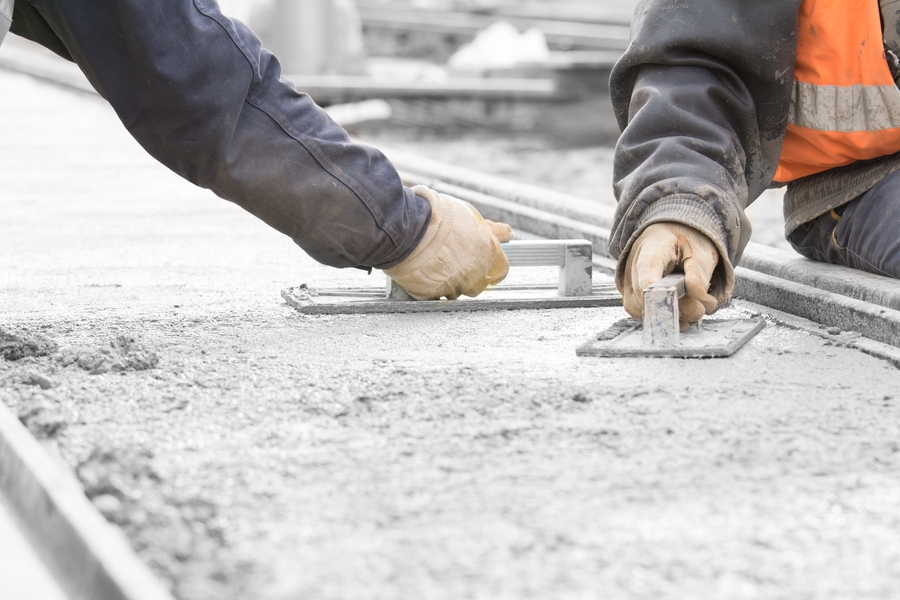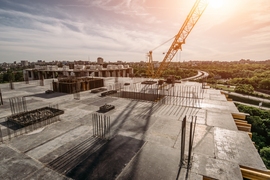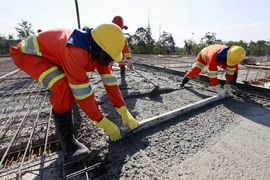As cities search for climate change solutions, many have turned to one burgeoning technology: cool pavements. By reflecting a greater proportion of solar radiation, cool pavements can offer an array of climate change mitigation benefits, from direct radiative forcing to reduced building energy demand.
Yet, scientists from the MIT Concrete Sustainability Hub (CSHub) have found that cool pavements are not just a summertime solution. Here, Randolph Kirchain, a principal research scientist at CSHub, discusses how implementing cool pavements can offer myriad greenhouse gas reductions in cities — some of which occur even in the winter.
Q: What exactly are cool pavements?
A: There are two ways to make a cool pavement: changing the pavement formulation to make the pavement porous like a sponge (a so-called "pervious pavement"), or paving with reflective materials. The latter method has been applied extensively because it can be easily adopted on the current road network with different traffic volumes while sustaining — and sometimes improving — the road longevity. To the average observer, surface reflectivity usually corresponds to the color of a pavement — the lighter, the more reflective.
We can quantify this surface reflectivity through a measurement called albedo, which refers to the percentage of light a surface reflects. Typically, a reflective pavement has an albedo of 0.3 or higher, meaning that it reflects 30 percent of the light it receives.
To attain this reflectivity, there are a number of techniques at our disposal. The most common approach is to simply paint a brighter coating atop existing pavements. But it’s also possible to pave with materials that possess naturally greater reflectivity, such as concrete or lighter-colored binders and aggregates.
Q: How can cool pavements mitigate climate change?
A: Cool pavements generate several, often unexpected, effects. The most widely known is a reduction in surface and local air temperatures. This occurs because cool pavements absorb less radiation and, consequently, emit less of that radiation as heat. In the summer, this means they can lower urban air temperatures by several degrees Fahrenheit.
By changing air temperatures or reflecting light into adjacent structures, cool pavements can also alter the need for heating and cooling in those structures, which can change their energy demand and, therefore, mitigate the climate change impacts associated with building energy demand.
However, depending on how dense the neighborhood is built, a proportion of the radiation cool pavements reflect doesn’t strike buildings; instead, it travels back into the atmosphere and out into space. This process, called a radiative forcing, shifts the Earth’s energy balance and effectively offsets some of the radiation trapped by greenhouse gases (GHGs).
Perhaps the least-known impact of cool pavements is on vehicle fuel consumption. Certain cool pavements, namely concrete, possess a combination of structural properties and longevity that can minimize the excess fuel consumption of vehicles caused by road quality. Over the lifetime of a pavement, these fuel savings can add up — often offsetting the higher initial footprint of paving with more durable materials.
Q: With these impacts in mind, how do the effects of cool pavements vary seasonally and by location?
A: Many view cool pavements as a solution to summer heat. But research has shown that they can offer climate change benefits throughout the year.
In high-volume traffic roads, the most prominent climate change benefit of cool pavements is not their reflectivity but their impact on vehicle fuel consumption. As such, cool pavement alternatives that minimize fuel consumption can continue to cut GHG emissions in winter, assuming traffic is constant.
Even in winter, pavement reflectivity still contributes greatly to the climate change mitigation benefits of cool pavements. We found that roughly a third of the annual CO2-equivalent emissions reductions from the radiative forcing effects of cool pavements occurred in the fall and winter.
It’s important to note, too, that the direction — not just the magnitude — of cool pavement impacts also vary seasonally. The most prominent seasonal variation is the changes to building energy demand. As they lower air temperatures, cool pavements can lessen the demand for cooling in buildings in the summer, while, conversely, they can cause buildings to consume more energy and generate more emissions due to heating in the winter.
Interestingly, the radiation reflected by cool pavements can also strike adjacent buildings, heating them up. In the summer, this can increase building energy demand significantly, yet in the winter it can also warm structures and reduce their need for heating. In that sense, cool pavements can warm — as well as cool — their surroundings, depending on the building insolation [solar exposure] systems and neighborhood density.
Q: How can cities manage these many impacts?
A: As you can imagine, such different and often competing impacts can complicate the implementation of cool pavements. In some contexts, for instance, a cool pavement might even generate more emissions over its life than a conventional pavement — despite lowering air temperatures.
To ensure that the lowest-emitting pavement is selected, then, cities should use a life-cycle perspective that considers all potential impacts. When they do, research has shown that they can reap sizeable benefits. The city of Phoenix, for instance, could see its projected emissions fall by as much as 6 percent, while Boston would experience a reduction of up to 3 percent.
These benefits don’t just demonstrate the potential of cool pavements: they also reflect the outsized impact of pavements on our built environment and, moreover, our climate. As cities move to fight climate change, they should know that one of their most extensive assets also presents an opportunity for greater sustainability.
The MIT Concrete Sustainability Hub is a team of researchers from several departments across MIT working on concrete and infrastructure science, engineering, and economics. Its research is supported by the Portland Cement Association and the Ready Mixed Concrete Research and Education Foundation.









